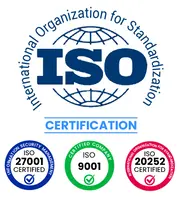

- Global Market Outlook
- In-depth analysis of global and regional trends
- Analyze and identify the major players in the market, their market share, key developments, etc.
- To understand the capability of the major players based on products offered, financials, and strategies.
- Identify disrupting products, companies, and trends.
- To identify opportunities in the market.
- Analyze the key challenges in the market.
- Analyze the regional penetration of players, products, and services in the market.
- Comparison of major players’ financial performance.
- Evaluate strategies adopted by major players.
- Recommendations
- Vigorous research methodologies for specific market.
- Knowledge partners across the globe
- Large network of partner consultants.
- Ever-increasing/ Escalating data base with quarterly monitoring of various markets
- Trusted by fortune 500 companies/startups/ universities/organizations
- Large database of 5000+ markets reports.
- Effective and prompt pre- and post-sales support.
Introduction
As we enter 2024, the allergic rhinitis market is experiencing significant shifts driven by a confluence of macro factors including technological advancements, evolving regulatory landscapes, and changing consumer behaviors. Innovations in drug delivery systems and biologics are enhancing treatment efficacy and patient adherence, while regulatory pressures are pushing for more stringent safety and efficacy standards. Additionally, a growing awareness of allergic conditions among consumers is leading to increased demand for personalized and over-the-counter treatment options. These trends are strategically important for stakeholders, as they not only influence product development and marketing strategies but also shape competitive dynamics within the industry.
Top Trends
- Increased Focus on Personalized Medicine
The shift towards personalized medicine is gaining momentum, with companies like AstraZeneca and GlaxoSmithKline investing in genetic profiling to tailor treatments. A study indicated that 70% of patients respond better to personalized therapies. This trend is expected to enhance patient outcomes and reduce healthcare costs, prompting more companies to adopt similar strategies. - Rise of Biologics in Treatment Options
Biologics are becoming a preferred treatment for allergic rhinitis, with Merck & Co. and Sanofi leading the charge. Recent data shows that biologics can reduce symptoms by up to 80% in severe cases. This trend is likely to expand the treatment landscape, encouraging more research and development in biologic therapies. - Integration of Digital Health Solutions
Digital health solutions, including mobile apps and telemedicine, are increasingly being integrated into allergic rhinitis management. Companies like Johnson & Johnson are developing platforms that allow for real-time symptom tracking. This integration is projected to improve patient engagement and adherence, ultimately enhancing treatment efficacy. - Sustainability in Pharmaceutical Practices
Sustainability is becoming a priority for pharmaceutical companies, with Bayer AG and Novartis implementing eco-friendly practices in production. A survey revealed that 60% of consumers prefer brands that prioritize sustainability. This trend is likely to influence corporate strategies and attract environmentally conscious consumers. - Expansion of Over-the-Counter (OTC) Options
The market for OTC treatments for allergic rhinitis is expanding, driven by consumer demand for accessible solutions. Glenmark Pharmaceutical Limited has launched new OTC products that cater to this need. This trend is expected to increase market competition and provide consumers with more choices for managing their symptoms. - Enhanced Regulatory Frameworks
Governments are tightening regulations around allergy medications to ensure safety and efficacy, impacting how companies like Boehringer Ingelheim operate. Recent changes have led to a 15% increase in compliance costs for manufacturers. This trend may lead to higher prices for consumers but aims to improve overall product quality. - Focus on Preventive Care Strategies
Preventive care is becoming a focal point in allergic rhinitis management, with initiatives from health organizations promoting early intervention. Studies show that preventive measures can reduce the incidence of severe allergic reactions by 30%. This trend is likely to shift healthcare resources towards preventive strategies, impacting treatment paradigms. - Increased Collaboration in Research and Development
Collaborative efforts among pharmaceutical companies and research institutions are on the rise, with ALK-Abelló A/S partnering with universities for innovative solutions. Collaborative R&D can accelerate the development of new therapies, potentially leading to breakthroughs in treatment options for allergic rhinitis. - Adoption of Artificial Intelligence in Drug Development
Artificial intelligence is being increasingly utilized in drug development processes, with companies like Merck & Co. leveraging AI for faster drug discovery. Reports indicate that AI can reduce development timelines by up to 30%. This trend is expected to revolutionize the pharmaceutical landscape, making drug development more efficient. - Growing Awareness and Education Initiatives
Awareness campaigns about allergic rhinitis are being launched by various health organizations, aiming to educate the public on symptoms and treatments. Data shows that informed patients are 40% more likely to seek treatment. This trend is likely to increase patient engagement and drive demand for effective therapies.
Conclusion: Navigating the Allergic Rhinitis Landscape
The allergic rhinitis market in 2024 is characterized by intense competitive dynamics and significant fragmentation, with both legacy and emerging players vying for market share. Regional trends indicate a growing demand for innovative solutions, particularly in North America and Europe, where awareness and treatment options are expanding. Vendors are strategically positioning themselves by leveraging advanced capabilities such as AI for personalized treatment plans, automation for efficient production, and sustainability initiatives to meet consumer expectations. Flexibility in product offerings will also be crucial as market demands evolve. As the landscape continues to shift, companies that prioritize these capabilities will likely emerge as leaders, effectively addressing the diverse needs of patients and healthcare providers alike.
Allergic Rhinitis Market Highlights:
Leading companies partner with us for data-driven Insights
Kindly complete the form below to receive a free sample of this Report
Tailored for You
- Dedicated Research on any specifics segment or region.
- Focused Research on specific players in the market.
- Custom Report based only on your requirements.
- Flexibility to add or subtract any chapter in the study.
- Historic data from 2014 and forecasts outlook till 2040.
- Flexibility of providing data/insights in formats (PDF, PPT, Excel).
- Provide cross segmentation in applicable scenario/markets.









